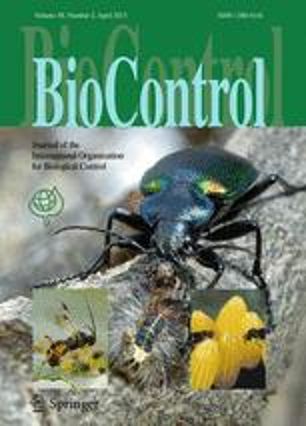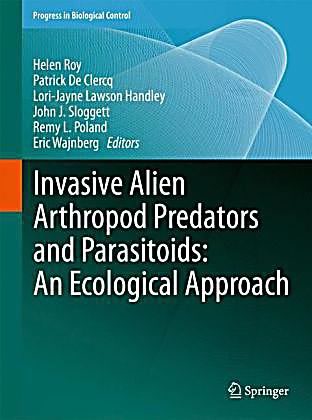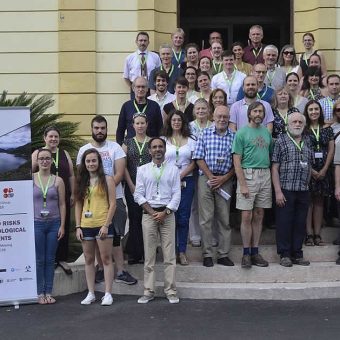Structure
This group was founded at a meeting in Brussels in 2007 attended by some 35 researchers from 9 European countries and Russia.
Specific aims:
To assess the characteristics of exotic natural enemies which are considered to be successful biological control agents
To assess the characteristics of exotic natural enemies introduced into a country as biological control agents which subsequently become invasive alien species
To highlight research areas requiring attention and develop strategies for supporting priority research
Ongoing development of guidelines on assessing environmental benefits and risks of releasing exotic biological control agents to increase cogency of decision making on classical biological control initiatives
Activities
Biennial WG meetings:
- 2009: Engelberg, Switzerland
- 2011: Hluboká, Czech Republic
- 2015: Bornholm, Denmark
- 2018: Ponta Delgada, Azores, Portugal
- 2023: Aveiro, Portugal
Achievements
The results of the working group’s activities are published in bulletins:

Unravelling the Ecology of an Invasive Ladybird, Harmonia axyridis: From Populations to Communities
Special issue of BioControl (2017): BioControl 62(3) Brown, P.M.J.; Nedved, O.; Lawson Handley, L.-J.; De Clercq, P.; Roy, H.E. (Eds.)

Invasive Alien Arthropod Predators and Parasitoids: An Ecological Approach
Special issue of BioControl (2012): Roy, H.; De Clercq, P.; Lawson Handley, L.-J.; Sloggett, J.J.; Poland, R.L.; Wajnberg, E. (Eds.)

From Biological Control to Invasion: the Ladybird Harmonia axyridis as a Model Species
Special issue of BioControl (2008), Dordrecht, Springer. Roy, Helen E.; Wajnberg, Eric (Eds.)
Keywords
exotic natural enemies, invasive alien species
Aim
The goal of the group is to offer a forum for exchange of information and to stimulate contacts and cooperation between scientists working in the field of benefits and risks of exotic biological control agents.






